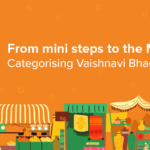Across India, Kaju Katli is a quintessential treat that lights up festive tables and adds sweetness to joyous occasions. It graces Diwali trays, often serving as the centerpiece among a variety of traditional sweets, and is an essential part of the gifting culture during festivals. Beyond its culinary appeal, it carries a deeper sentiment of goodwill, prosperity, and togetherness, making it a universal favorite. Whether gifted as a token of love or savored in moments of celebration, Kaju Katli is more than a dessert—it’s a cultural symbol that transcends generations.
But how did this exquisite sweet become such a beloved indulgence? Its story takes us back centuries to the royal kitchens of the Mughal Empire, where its origins are believed to lie. During a time when culinary innovation was celebrated, and exotic ingredients were introduced to Indian cuisine, Kaju Katli began its journey as a regal creation. Understanding its historical roots not only adds depth to its appreciation but also highlights its transformation from a royal delicacy to a widely adored treat in modern India.
The Kaju Katli Origin
Tracing Kaju Katli to the Mughal Era

The origin of Kaju Katli took place in the opulent courts of the Mughal Empire. Introduced to India by Portuguese traders, cashews were initially a luxury ingredient reserved for royalty and the elite. Known for their creamy texture and versatility, cashews quickly became a prized commodity in Indian cuisine. The Mughal emperors, known for their sophisticated tastes and passion for culinary innovation, embraced cashews in their royal kitchens.
Kaju Katli, or “cashew slice,” is said to have emerged during this time. Chefs in the Mughal courts experimented with grinding cashews into a fine paste, mixing it with sugar and ghee, and slow-cooking the mixture to create a rich, pliable dough. The result was a decadent dessert that became a symbol of refinement and luxury. It’s believed as per Kaju Katli history that the diamond shape of Kaju Katli was a deliberate choice, symbolizing prosperity and elegance, befitting its royal origins.
The Early Preparation and Use of Cashews in Indian Cuisine

Before Kaju Katli took its modern form, cashews had already carved a niche in Indian cuisine. In the coastal regions of Goa and Kerala, where cashew trees thrived, they were incorporated into curries, snacks, and desserts. The use of cashews in sweets gained prominence when their unique properties were discovered: a fine powder or paste made from cashews offered a creamy consistency and a rich, nutty flavor that was unmatched by other nuts.
The simplicity of Kaju Katli’s ingredients—cashews, sugar, and sometimes a touch of cardamom or rose water—allowed the natural flavors of the nuts to shine. Over time, as cashews became more accessible, the recipe evolved to cater to broader audiences, but its regal essence remains intact.
Exploring Royal Kaju Katli Origin and Cultural Significance
Rise of Kaju Katli in Indian Festivals and Ceremonies

Fast forward to modern times, and Kaju Katli has become synonymous with celebration. It’s impossible to imagine Diwali, the festival of lights, without the presence of Kaju Katli on sweet platters. Its diamond-shaped pieces, often wrapped in a thin layer of edible silver leaf (varak), add a touch of grandeur to any occasion.
The popularity of Kaju Katli as a festival sweet can be attributed to its versatility and wide appeal. Unlike many Indian sweets that are heavily spiced or flavored, Kaju Katli’s subtle sweetness and smooth texture make it a crowd-pleaser. It is also considered a premium gift, signifying thoughtfulness and prosperity when exchanged during celebrations.
Beyond festivals, Kaju Katli has a special place in weddings, anniversaries, and milestone celebrations. Its presence often signifies abundance and joy, making it a sweet that bridges tradition and modernity.
Variations of Kaju Katli: Modern Twists on a Classic

While the classic Kaju Katli remains a favorite, creative variations have emerged in recent years to cater to diverse tastes. These include:
- Chocolate Kaju Katli: A fusion of cashew goodness with a chocolatey twist.
- Pista Kaju Katli: Combining pistachios with cashews for a nutty and vibrant variation.
- Saffron-Infused Kaju Katli: Adding a luxurious touch of saffron for color and aroma.
- Vegan Kaju Katli: Replacing ghee with plant-based oils for a dairy-free version.
These adaptations ensure that Kaju Katli continues to charm new generations while staying rooted in tradition.
Order Authentic Kaju Katli from Swiggy
Craving the rich, nutty flavor of Kaju Katli? Search “Kaju Katli restaurants near me” and order food online from the best sweets restaurants. With Swiggy, you can enjoy freshly made Kaju Katli delivered straight to your door. From traditional mithai shops to gourmet sweet makers, Swiggy connects you with a variety of options to suit every palate and occasion. Whether you’re planning a festive celebration or indulging in a personal treat, Kaju Katli is just a click away.
Conclusion
Kaju Katli’s journey from the royal kitchens of the Mughal Empire to its place on modern festive tables is a testament to its timeless appeal. Its rich history, cultural significance, and irresistible flavor make it a dessert that continues to captivate hearts across India and beyond. As you savor a piece of Kaju Katli, you’re not just enjoying a sweet treat—you’re partaking in a legacy of culinary artistry and celebration.
FAQ
1. What are the main ingredients in Kaju Katli?
As per history of Kaju Katli, the main ingredients are cashews, sugar, water, and ghee. Additional ingredients like cardamom or rose water may be added for flavor, and edible silver leaf (varak) is often used for decoration.
2. Why is Kaju Katli shaped like a diamond?
The diamond shape of Kaju Katli is said to symbolize prosperity, elegance, and luxury, aligning with its origins as a royal sweet. The unique shape also makes it easy to portion and serve.
3. Is Kaju Katli suitable for vegans?
Traditional Kaju Katli is made with ghee, which is not vegan. However, vegan versions of Kaju Katli use plant-based oils or coconut milk instead of ghee, making it suitable for a vegan diet.
Author Bio
Satisfying your cravings, one bite at a time. Discover the best eats, trends, and uncover the hidden gems with us to make your online ordering or dining experience a memorable one.















































































